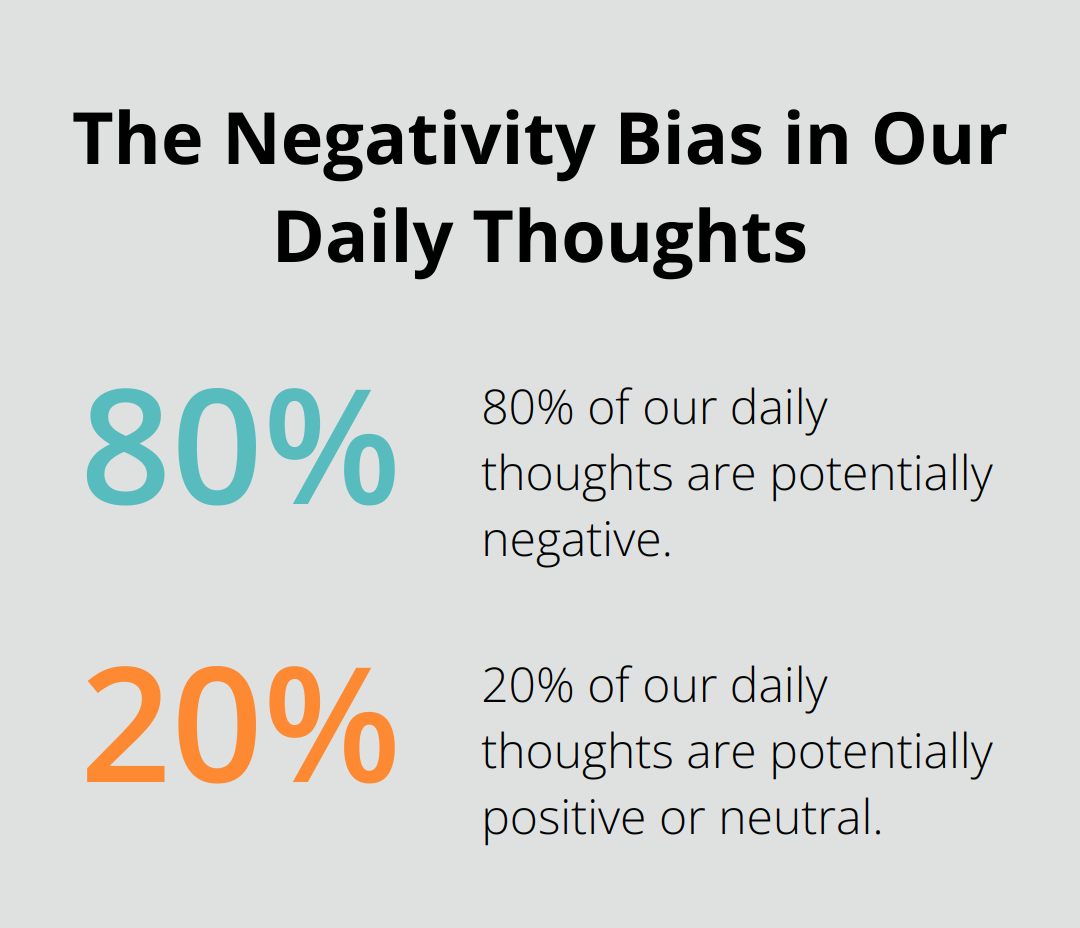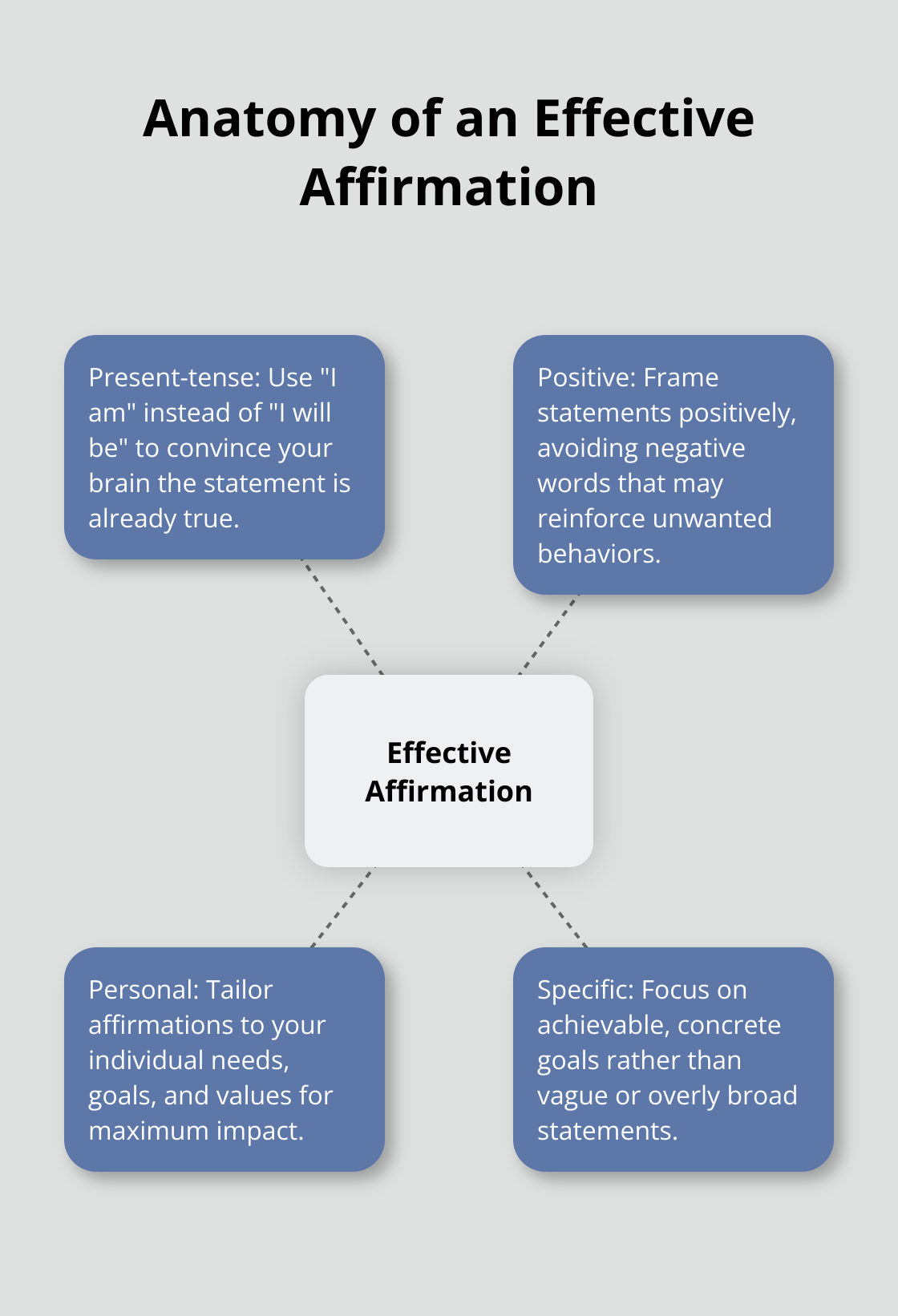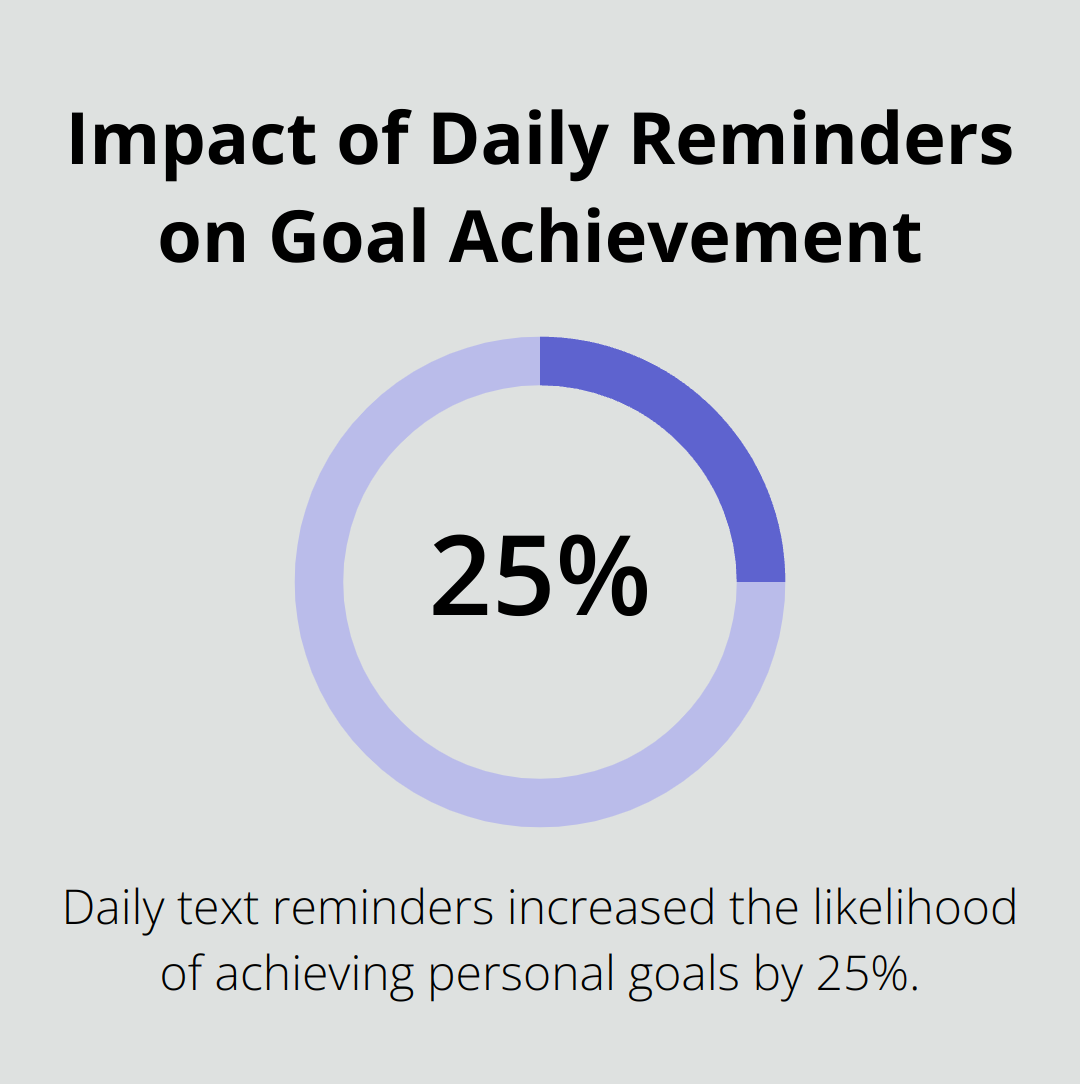At Global Positive News Network, we believe in the power of positive thinking to transform lives. Daily affirmations and short positive affirmations are simple yet effective tools that can reshape our mindset and boost our well-being.
In this blog post, we’ll explore the science behind affirmations, how to craft them effectively, and ways to incorporate them into your daily routine. Get ready to unlock the potential of positive self-talk and elevate your mental health.
How Affirmations Rewire Your Brain
The Neuroscience of Positive Self-Talk
Affirmations are more than just positive statements; they actively reshape your brain’s neural pathways. Research from the National Science Foundation reveals that we have about 12,000 to 60,000 thoughts per day, with 80% potentially negative. Affirmations counteract this negativity bias.

A study published in Social Cognitive and Affective Neuroscience found that self-affirmation activates the ventromedial prefrontal cortex (an area linked to positive valuation and self-related information processing). This activation strengthens neural pathways associated with positive self-perception.
Evidence-Based Benefits of Affirmations
The effectiveness of affirmations isn’t just anecdotal; solid research supports it. A study in the Personality and Social Psychology Bulletin revealed that participants who practiced self-affirmation showed increased activity in brain regions associated with reward and positive valuation.
Moreover, a study found that affirmations can lower stress levels. Participants who engaged in self-affirmation exercises showed improved problem-solving performance, particularly in chronically stressed individuals.
Positive Self-Talk and Mental Health
The link between positive self-talk and improved mental health is undeniable. A study in the Journal of Personality and Social Psychology demonstrated that individuals who practiced daily affirmations reported higher levels of self-esteem and lower levels of anxiety.
Dr. Kristin Neff, a leading researcher in self-compassion, found that positive self-talk can significantly reduce symptoms of depression and anxiety. Her research shows that individuals who practice self-affirmation are more resilient in the face of challenges and setbacks.
Implementing Affirmations in Your Daily Life
Try to start with just five minutes a day, focusing on specific, present-tense statements that resonate with your personal goals and values. Over time, you’ll likely notice a shift in your thought patterns and overall well-being.
Consistency is key. The more you practice affirmations, the stronger those neural pathways become. It’s like building a muscle – the more you exercise it, the stronger it gets. (This principle applies to both physical and mental exercises.)
The Power of Personalized Affirmations
While general affirmations can be beneficial, personalized statements often yield the most powerful results. (These tailored affirmations directly address your unique challenges and aspirations.) Create affirmations that speak to your specific goals, values, and areas of growth for maximum impact.
As we explore the science behind affirmations, it’s clear that this practice holds significant potential for personal growth and mental well-being. In the next section, we’ll discuss how to craft effective affirmations that resonate with your individual needs and aspirations.
How to Create Powerful Affirmations
The Anatomy of an Effective Affirmation
Powerful affirmations combine self-awareness, positivity, and specificity. They use present-tense, positive, personal, and specific language. For example, “I am confident in my abilities” works better than “I will be confident.” This present-tense framing convinces your brain that the statement is already true, increasing the likelihood of its manifestation in reality.

Avoiding Common Affirmation Mistakes
Many people create vague or unrealistic affirmations. Statements like “I am the best at everything” are too broad and can undermine self-belief. Focus on specific, achievable goals instead: “I excel at problem-solving in my work.”
Another error involves using negative words, even in a positive context. Your subconscious mind often overlooks negatives like “not” or “don’t.” So, “I don’t procrastinate” might reinforce the very behavior you want to avoid. Rephrase it positively: “I complete tasks efficiently and on time.”
Tailoring Affirmations to Different Life Areas
Career Growth
Use affirmations like: “I contribute valuable ideas in meetings confidently.” This addresses a specific professional scenario and boosts self-assurance.
Relationships
Try: “I communicate openly and listen with empathy.” This focuses on key interpersonal skills that can enhance your connections with others.
Personal Development
Consider: “I embrace challenges as opportunities for growth.” This statement reframes difficulties positively, encouraging a growth mindset.
The Power of Personalization
Self-affirmations have been found to decrease health-deteriorating stress and are linked positively to academic achievement. This personal touch makes your affirmations more meaningful and impactful.
Integrating Affirmations into Daily Life
To maximize the impact of your affirmations, integrate them into your daily routine. You might repeat them during your morning routine, write them in a journal, or set reminders on your phone. Consistency is key in rewiring your thought patterns and beliefs.
As you master the art of creating powerful affirmations, you’ll find yourself better equipped to shape your mindset and achieve your goals. In the next section, we’ll explore practical ways to incorporate these affirmations into your daily life for maximum benefit.
How to Make Affirmations a Daily Habit
Start Your Day with Affirmations
Affirmations are positive statements intended to promote self-belief and motivation. The morning offers an ideal time to practice affirmations. Your mind remains fresh and receptive, which sets a positive tone for the day ahead. Dr. Hal Elrod, author of “The Miracle Morning,” suggests that the first hour after waking has the most impact for personal development activities like affirmations.
Try to set your alarm 10 minutes earlier than usual. As soon as you wake up, sit up in bed or move to a comfortable spot. Take a few deep breaths and begin to repeat your chosen affirmations. Speak them aloud with conviction, or write them down in a journal. This simple act can significantly influence your mindset for the entire day.
Use Technology to Your Advantage
In our digital age, your smartphone can serve as a powerful tool for reinforcing affirmations throughout the day. Set reminders with your affirmations as the alert message. Apps like ThinkUp and Motivation allow you to record your affirmations and play them back with background music.
A study by the University of Pennsylvania found that daily text message reminders increased the likelihood of achieving personal goals by 25%. Apply this principle to your affirmations by setting up periodic notifications throughout your day.

Combine Affirmations with Other Practices
Research indicates that regular practice of affirmations can enhance one’s self-image and reduce both stress and anxiety levels. The integration of affirmations with other positive practices can amplify their impact. During your meditation sessions, focus on your affirmations as mantras. This combination can deepen your meditation experience while reinforcing positive self-talk.
Journaling complements affirmations powerfully. After writing your affirmations, reflect on their meaning in your life. Note any progress or challenges related to your affirmations. This practice enhances self-awareness and helps track your personal growth over time.
Exercise provides another opportunity for affirmation practice. Many athletes use positive self-talk to enhance performance. Try to repeat your affirmations in rhythm with your steps while running or during rest periods between sets at the gym.
Create an Affirmation-Friendly Environment
Your surroundings play a significant role in reinforcing your affirmations. Place sticky notes with your affirmations on your mirror, computer screen, or refrigerator. These visual cues serve as constant reminders throughout your day. You might also consider creating a vision board that incorporates your affirmations alongside images representing your goals.
Practice Affirmations Before Bed
Bookend your day with affirmations by incorporating them into your bedtime routine. As you prepare for sleep, repeat your affirmations quietly to yourself. This practice can help shift your mind towards positivity before sleep, potentially influencing your subconscious mind during rest. Some people find that this nighttime practice leads to more positive dreams and a refreshed feeling upon waking.
Final Thoughts
Daily affirmations and short positive affirmations can transform our mental well-being and outlook on life. These simple yet powerful tools activate brain regions associated with positive self-perception and reward, leading to improved problem-solving skills and enhanced resilience. We at Global Positive News Network encourage you to start your own affirmation practice today, beginning with just a few minutes each day.
Effective affirmations use present-tense, positive, and specific language tailored to individual goals and values. Consistency proves key to reaping the full benefits, whether you choose to start your day with positive self-talk or use technology to remind you throughout the day. You can incorporate affirmations into your daily routines without complication (and watch as these powerful statements gradually transform your thought patterns).
For more inspiring content and stories that promote peace and positivity, visit Global Positive News Network. Our platform shares uplifting news, personal triumphs, and acts of kindness that help maintain an optimistic perspective in today’s world. Join our community of like-minded individuals who believe in the power of positivity to create meaningful change.




